- Home
- Dirk Patton
Rolling Thunder - 03
Rolling Thunder - 03 Read online
Rolling Thunder
Voodoo Plague Book 3
Text Copyright © 2014 by Dirk Patton
Copyright © 2014 by Dirk Patton
All Rights Reserved
This work may not be redistributed, copied or reproduced by any means for any purpose other than brief excerpts used as part of literary and critical reviews.
The people, places and events depicted herein are fictitious and are purely from the author’s imagination. Any resemblance to locales or persons, living or dead, is coincidental.
Also by Dirk Patton
Voodoo Plague
Crucifixion: Voodoo Plague Book Two
Rules Of Engagement: A John Chase Short Story
Table of Contents
Author’s Note
1
2
3
4
5
6
7
8
9
10
11
12
13
14
15
16
17
18
19
20
21
22
23
24
25
26
27
28
29
30
31
32
33
34
35
36
37
38
39
40
41
42
43
Acknowledgements
Author’s Note
Thank you for purchasing Rolling Thunder, Book 3 in the Voodoo Plague series. As you’ve probably already guessed from the title this is the third book in the series. If you haven’t read the first two books I would encourage you to do so first, otherwise you will be lost as this book is intended to continue the story in a serialized format. I intentionally did nothing to explain comments and events that reference Books 1 and 2. Regardless, you have my heartfelt thanks for reading my work and I hope you’re enjoying the adventure as much as I am. As always, a good review on Amazon is greatly appreciated and the best way to ensure Book 4 happens.
Crying parents tell their children
If you survive, don't do as we did
A son exclaims there'll be nothing to do to
Her daughter says she'll be dead with you
The Fixx – Stand or Fall
1
I pressed harder on the accelerator as I heard two more blasts from the shotgun. Sergeant Jackson of the Murfreesboro Police and a few dozen others were making a last stand against the horde of infected that had breached the defensive wall we had set up to buy time for evacuees to board trains that would take them to safety. Not all of us made it onto those trains. Some were paying the ultimate price and falling to the unstoppable rampage of the infected. I didn’t hear any more shots and would have liked to think it was because I had driven out of hearing range of the battle, but I knew better. The handful of defenders who had been caught before boarding the train wouldn’t stand up to the thousands of raging females for even a minute.
Glancing in the small mirror mounted to the dash of the purloined ambulance, I noted that Rachel was still unconscious. She had been flattened by a massive explosion when a truck stop’s underground fuel tanks had touched off. I didn’t know how badly, if at all, she was injured, but I had taken a cautious approach and strapped her to a backboard after putting a cervical collar on her. Just in case. I’m not a religious man and couldn’t summon up a prayer for her, but I fervently hoped she was just knocked out with no other trauma. In the new world we found ourselves in, a world where survival of the fittest was truly the law of the land, any incapacitating injury was also a death sentence. In the seat next to me Dog let out a series of low whines as he looked into the back at Rachel’s still form.
As I drove, I looked over the cab of the ambulance. The vehicle had a compass integrated into the dash and told me I was driving north. Between the seats a sturdy laptop mount held a rugged looking computer. Driving with one hand I raised the lid and the screen flared to life, displaying a login screen. Shit. I can use a computer with the best of them but don’t ask me to try to hack into something. Blow it up, ok. Shoot it, no problem. Hack into it? I’m not even sure what that really means. Closing the lid to get rid of the light from the screen I caught a brief glimpse of something shiny on the outside of the laptop. Clicking on the overhead light I saw a single strip of tape with some writing on it. Leaning forward I could make out “EMTsROCK99” hand written in black sharpie. Raising the lid back up I typed this in one handed and was rewarded with the display changing and showing a detailed road map with a pulsing blue dot that had to be the ambulance’s location.
By now I had driven at least ten miles and felt safe enough to stop so I could figure out where we were and where we were going. Pulling to the side of the road I made sure the doors were locked and decided to turn on the red and blue emergency lights on the roof while I was stopped. There were still people north of the approaching herd and they would be fleeing to safety in a panic. All I needed was a van load of refugees to plow into the ambulance. I hoped the emergency lights would help us avoid that little problem.
I played with the map for a few moments, zooming in then out and scrolling around. We were currently sitting on Tennessee state highway 10 and were about 35 miles south of Interstate 40, highway 10 running north from Murfreesboro and staying to the east of Nashville. I wanted to avoid the large city if at all possible. The original attacks had not included Nashville, but the second wave of infection just a couple of days ago probably made that a moot point. The day the second wave had hit I had briefly spoken on the radio with a Royal Air Force humanitarian aid flight and was told that they had lost all communication with Nashville. I had a pretty good idea why that had happened and didn’t feel like confirming my belief the hard way.
Still staring at the screen I ducked involuntarily when a helicopter flared into a hover just in front of me, a hundred feet in the air, and a blinding spotlight lit up the inside of the ambulance. I recognized the sound of a Black Hawk helicopter and drug my pack out of the back and dug through it for my secure comm unit. It took me a minute to find it and get the earpiece inserted in my good ear, then another couple of minutes as I tried different channels to communicate with the helicopter.
“US ground forces on secure comm calling unidentified Black Hawk.” I said into the throat mic.
“Devil three seven on station over you,” a voice with a heavy Boston accent replied when I hit the right frequency. “Identify yourself and state your status.”
“Major John Chase, Fifth Group. I have two souls with me, one injured, and need evac. Can you comply?”
There was a long pause before the voice responded, “Negative. Aircraft is already over capacity.”
I wasn’t surprised. “Do you have a medic on board?” I asked, glancing at Rachel in the mirror. “The casualty needs assessed and possibly treated.”
“Wait one,” was the reply.
A long moment later the spotlight winked out and in the ambulance’s headlights I could see four ropes drop to the ground beneath the helicopter. Moments later four figures slid down them to the pavement. One wore a large pack, the other three had rifles strapped to their bodies and immediately set up a defensive perimeter the second their boots hit the ground. Killing the ambulance’s emergency beacons and headlights I stepped out to greet them, Dog jumping to the ground next to me. Another figure slid down a rope to the asphalt and the helicopter pulled up and away before going into a tight orbit around the area.
I walked forward and first met the medic who I directed to the back of the ambulance. He clicked on a low power light and looked at the bloody shirt wrapped around my head, but I waved him on. Rachel was the priority. The last man who had fast roped down walked up to me, stopping a few feet away and looking me up and down. He wore First Sergeant’s chevrons on his uniform and a green beret on his head. His name tape read Glendon. He glanced at my oak leaves and nodded a greeting. He wasn’t being disrespectful. You never salute a superior officer on the battle field. If you did it would be like holding up a big neon sign for the enemy that says “kill this guy, he’s important”.
“Could have used you guys back in Murfreesboro,” I said, checking on the location of the three men who were watching our perimeter.
“Was that you? That big explosion?” He asked and I recognized the Boston accent I’d heard on the radio. Guess I hadn’t been talking to the pilot.
“Yep, that was pretty much the end of us. The herd is only a few miles behind but we held it long enough to get two trainloads of evacuees out of town.”
“Well, Major, we were northwest of Nashville picking up one of the civilian leadership when we saw the explosion and came to investigate.” Civilian leadership meant a member of congress, or one of the President’s cabinet members. Being as we were in Tennessee I had a reasonably good idea which it was. “He’s on board with his family right now and isn’t too happy that we’ve delayed to help you.” A small grin spread across his face. I knew how he felt about politicians. They talk tough, but tend to rant like children when they’re scared, and to a man, the military enjoys inconveniencing them as much as can be gotten away with. I grinned back and motioned for him to walk with me so I could go see how the medic was doing with Rachel.
“Well, you have my thanks for dropping in. Tell me what’s going on. Is Nashville safe? What about Fort Campbell?”
“Fort Campbell has fallen,” he said, all traces of the grin gone from his face and voice. “The defensive line at the southern Tennessee border has also fallen. Nashville is chaos. Whatever the hell happened a couple of days ago, well, half the people in Nashville turned or went crazy or whatever the hell you want to call it. The other half is doing the best it can to survive, but there’s no coordinated effort and after the packs overrun one group of survivors they move on to the next. You don’t want to go anywhere near Nashville.”
I nodded, not surprised by anything he was telling me. We reached the back of the ambulance and looked in on Rachel and the medic who had removed the cervical collar and was running his hands over the back of her head and neck. She was still unconscious. Dog stood watching the medic, one of the rare times his ears weren’t straight up. Sergeant Glendon raised a hand to his earpiece, listened for a moment then excused himself and stepped away to hold a conversation.
“How is she?” I asked the medic.
“What happened to her?” He asked without pausing in his examination.
“That huge explosion you guys saw. She was maybe 250 yards from it and got knocked flat. She was on her back, unconscious when I got to her.”
“She’s got a big lump on the back of her head, probably from hitting the ground when she got knocked down. I can’t find any other signs of injury, but with her unconscious I can’t do any of the tests I’d normally do for spinal injuries. Why did you put her on the backboard?” He stopped what he was doing and turned to look at me.
“Just seemed like the right thing to do.”
“OK, well like I said, all I can find is the lump on her head. She probably has a pretty bad concussion. There’s no sign of it being worse than that. Her pupils are fine, equal and reactive to light. Her vitals are all good. There’s really nothing I can do for her at this point.” He started packing away the equipment he had used to check out Rachel.
“So, should I leave her on the backboard?”
“For now I would. It won’t hurt anything. If she wakes up and can feel and move all her limbs, unstrap her and try to keep her from taking any more blows to the head for a few days. If she wakes up and has problems…” He stopped talking and looked at me with a helpless expression.
“Yeah, I got it,” I said, letting him off the hook. He packed up the last of his equipment and turned to me.
“Want me to take a look at your head?” I had forgotten I was injured too. Nodding I climbed up into the back of the ambulance and sat down on the bench next to the medic. He carefully untied the bloody shirt and unwrapped it from around my head. As soon as the pressure came off the pain hit and I could feel blood running down the side of my face.
“Damn, Major. Your ear is almost completely ripped off.” Well, that explained why I could hardly hear out of that ear.
The medic worked fast. First he numbed me up, then cleaned the raw edges of skin where the infected had torn my ear lose. Opening a couple of drawers in the ambulance he found a suture kit and set to work.
“This won’t be pretty,” he said as he worked. “Sorry, but I don’t do this a lot. You’ll probably have a hell of scar, but at least I think it will save the ear.”
I grunted, not really giving a damn about another scar. It’s not like I could have ever been a male model to begin with. Not that I’m ugly, but… hell, you get the idea. Anyway, it took him about 15 minutes to sew me up, bandage the ear and treat the gashes on my face where the female infected had torn me open. As he was finishing up, Sergeant Glendon walked up to the back of the ambulance and looked in.
“Sorry, Major, but we’ve got to get our asses in gear, and you’d better do the same. The Air Force has a big present on the way for the herd of infected.”
“What’s happening?” A nuke was the first thought that went through my head. God help us if we started popping those off on our own soil.
“They’re calling it Rolling Thunder.”
2
Rolling Thunder was a bombing campaign during the Vietnam War… uh, conflict, from 1965 to 1968. It was basically carpet bombing of North Vietnam with the declared objective of demonstrating America’s commitment to our South Vietnamese allies. It was supposed to disrupt NVA and VC supply lines and demoralize the enemy. Despite millions of pounds of bombs being dropped it didn’t do either. But that wasn’t because the idea of waves of B-52s dropping thousands of bombs at once is a bad idea. It was the politics involved, and… well, I digress.
“Carpet bombing to stop the herd?” I asked.
“Yes, sir. Everything south of I-40 is about to get rearranged, big time. First wave of bombers will be overhead in 20 mikes.” He must have already called for a pick up as the Black Hawk had come out of its orbit and dropped to a hover just a couple of feet above the pavement. The medic shouldered his pack and I thanked him as he jumped out of the ambulance and ran for the waiting helicopter.
Neither of us wasted any more time. Glendon stuck his hand out and I gave it a quick shake, then he was running for the Black Hawk and calling in the guys on the perimeter over the radio. I slammed the back doors to the ambulance and ran for the cab, Dog beating me there and leaping in and across my seat. I had just been looking at a map before the helicopter’s arrival and I knew I-40 was 35 miles away. And I only had 20 minutes to get there. Waiting for the last of the soldiers to board the Black Hawk that was blocking the highway I shifted the ambulance into drive, held my foot on the brake and did the math in my head as I waited. 35 miles in 20 minutes. Shit. I was coming up with over 100 miles per hour. Not that big a deal in a sports car, but an ambulance isn’t built to haul ass on dark, twisty highways.
The last man climbed aboard the hovering helicopter and it roared off into the sky. I floored the accelerator and grimaced in frustration as the ambulance slowly picked up speed. It seemed to take forever to reach 60, and I kept the pedal nailed to the floor. Slowly the speed climbed and was passing 80 as I came to the first curve. A yellow sign with a curved arrow warned me to slow to 50 for the curve but I kept the throttle pegged and steered for the inside edge. The curve
was long and sweeping, a sheer rock face right next to the highway on my left and a guardrail on the right protecting a drop-off that in the dark I couldn’t tell where the bottom was. The speed held at just over 80 as I fought the steering wheel to control the drift towards the guardrail. The wheel fought back and the dual rear tires chattered in protest as we entered the sharpest part of the curve.
There were several crashes from the back as equipment and supply drawers flew open and spilled their contents. The big, top-heavy vehicle threatened to start rolling up on the outside tires but I had held it tight enough that there was room to slip to the right and compensate for the tilt. Finally we roared out of the end of the curve, the speedometer quivering on 86 and directly ahead was a long, steep hill. Our speed climbed to just over 90 for a few moments, then we started up the grade and for every quarter mile travelled lost almost ten miles per hour. Shit. We weren’t going to make it.
As the grade leveled out our speed started climbing again, then we crested and started down the hill and quickly maxed the speedometer which only registered up to 100. The down grade wasn’t as long as the climb had been, but the ambulance hadn’t been designed to run at the speed I was driving. The wheel bounced in my hands, and even though there was power steering I was having a hard time keeping us in a straight line. The down grade bottomed out and so did the ambulance, then we screamed into a right hand curve marked at 60 and I almost turned us over as I battled with the brakes and steering.
Coming out of the curve there was a fairly level stretch of road ahead of us and I pushed the throttle as hard as I could. The engine roared and the wheel shook but I was able to get the speedometer maxed out once again. I had noted the time on the dash clock when I’d gotten back behind the wheel and risked taking my eyes off the road long enough to check it. We had been driving for seven minutes. Maybe we had covered eight miles. I kicked myself for not having noted the odometer reading as well. We got another minute on the straight then another yellow curve warning sign flashed past, this one marked 45. Standing on the brakes I cut our speed to 70 as we blasted through the curve. Coming out of the curve we climbed a small hill and I crested it doing nearly 90 and the ambulance’s headlights, on bright, glinted off chrome and glass in the road ahead. Much too close.

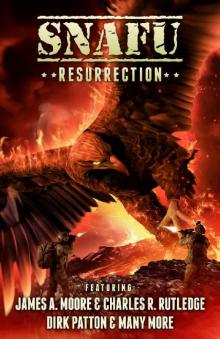 SNAFU: Resurrection
SNAFU: Resurrection The Awakening
The Awakening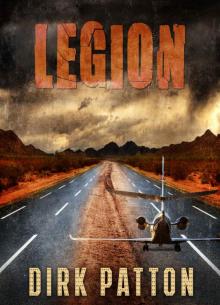 Legion: V Plague Book 19
Legion: V Plague Book 19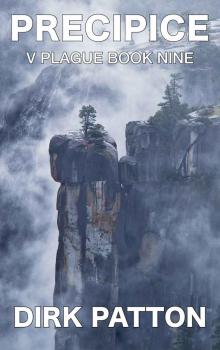 Precipice: V Plague Book 9
Precipice: V Plague Book 9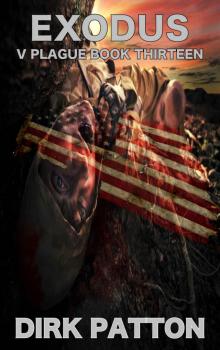 V Plague (Book 13): Exodus
V Plague (Book 13): Exodus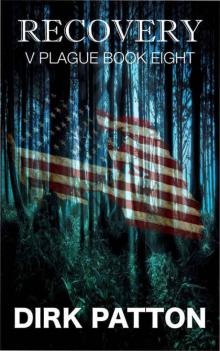 Recovery: V Plague Book 8
Recovery: V Plague Book 8 Fractured: V Plague Book 15
Fractured: V Plague Book 15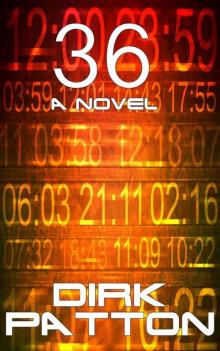 36: A Novel
36: A Novel Anvil
Anvil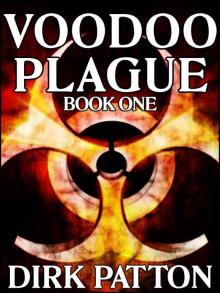 Voodoo Plague - 01
Voodoo Plague - 01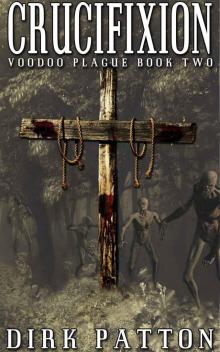 Crucifixion - 02
Crucifixion - 02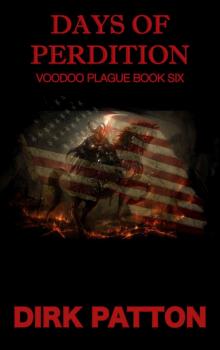 Days Of Perdition: Voodoo Plague Book 6
Days Of Perdition: Voodoo Plague Book 6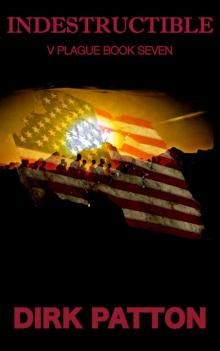 Indestructible: V Plague Book 7
Indestructible: V Plague Book 7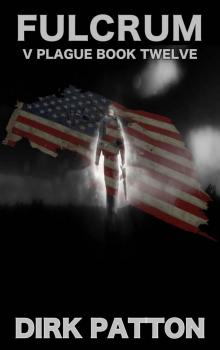 Fulcrum: V Plague Book 12
Fulcrum: V Plague Book 12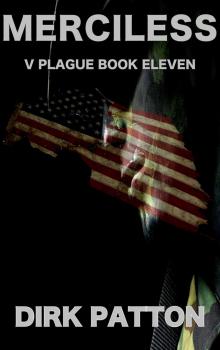 V Plague (Book 11): Merciless
V Plague (Book 11): Merciless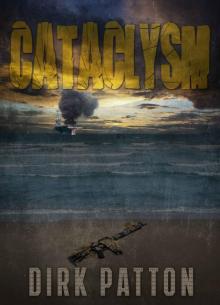 Cataclysm: V Plague Book 18
Cataclysm: V Plague Book 18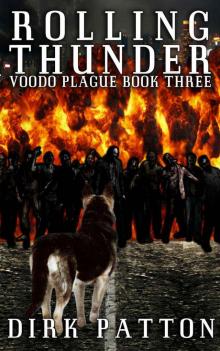 Rolling Thunder - 03
Rolling Thunder - 03 Red Hammer: Voodoo Plague Book 4
Red Hammer: Voodoo Plague Book 4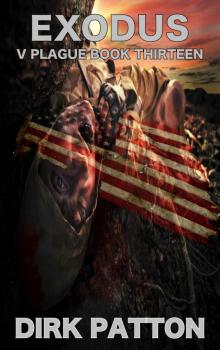 Exodus: V Plague Book 13
Exodus: V Plague Book 13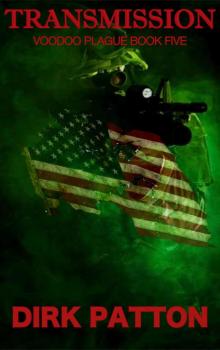 Transmission: Voodoo Plague Book 5
Transmission: Voodoo Plague Book 5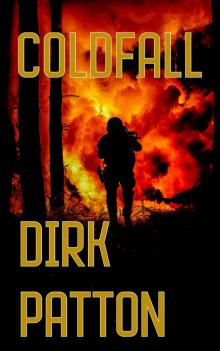 Coldfall
Coldfall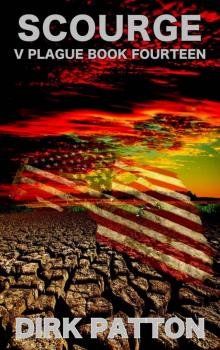 Scourge: V Plague Book 14
Scourge: V Plague Book 14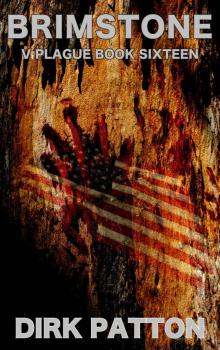 V Plague (Book 16): Brimstone
V Plague (Book 16): Brimstone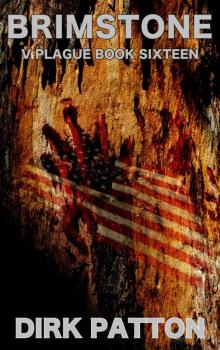 Brimstone: V Plague Book 16
Brimstone: V Plague Book 16